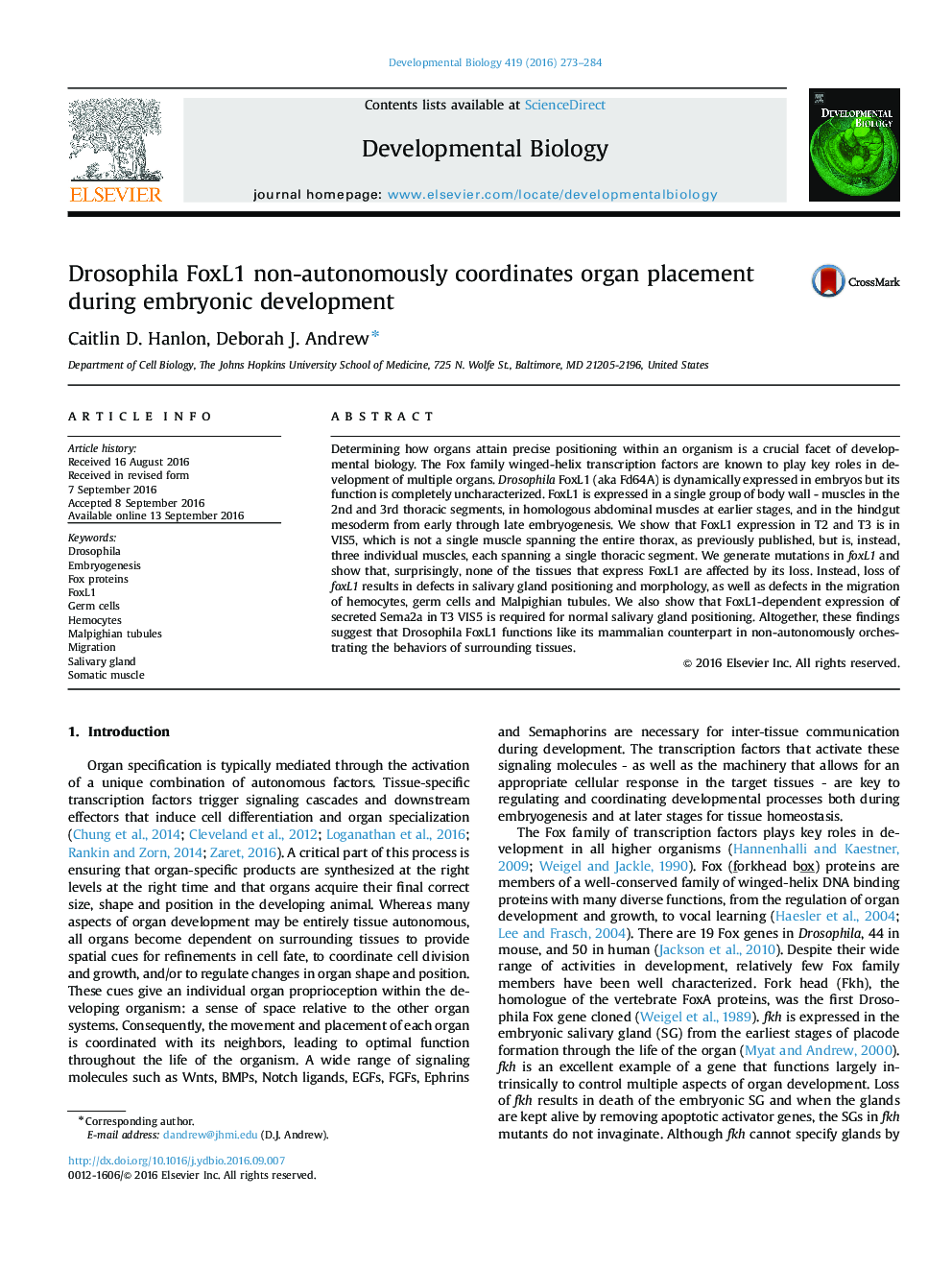| کد مقاله | کد نشریه | سال انتشار | مقاله انگلیسی | نسخه تمام متن |
|---|---|---|---|---|
| 5532021 | 1401826 | 2016 | 12 صفحه PDF | دانلود رایگان |

- The Drosophila FoxL1 homologue is expressed in the VIS5 somatic muscles and in homologous abdominal muscles.
- VIS5 is not a single muscle extending from one end of the thorax to the other; it is three separate muscles
- FoxL1 functions nonautonomously to affect the salivary glands, Malpighian tubules and germ cells.
Determining how organs attain precise positioning within an organism is a crucial facet of developmental biology. The Fox family winged-helix transcription factors are known to play key roles in development of multiple organs. Drosophila FoxL1 (aka Fd64A) is dynamically expressed in embryos but its function is completely uncharacterized. FoxL1 is expressed in a single group of body wall - muscles in the 2nd and 3rd thoracic segments, in homologous abdominal muscles at earlier stages, and in the hindgut mesoderm from early through late embryogenesis. We show that FoxL1 expression in T2 and T3 is in VIS5, which is not a single muscle spanning the entire thorax, as previously published, but is, instead, three individual muscles, each spanning a single thoracic segment. We generate mutations in foxL1 and show that, surprisingly, none of the tissues that express FoxL1 are affected by its loss. Instead, loss of foxL1 results in defects in salivary gland positioning and morphology, as well as defects in the migration of hemocytes, germ cells and Malpighian tubules. We also show that FoxL1-dependent expression of secreted Sema2a in T3 VIS5 is required for normal salivary gland positioning. Altogether, these findings suggest that Drosophila FoxL1 functions like its mammalian counterpart in non-autonomously orchestrating the behaviors of surrounding tissues.
Journal: Developmental Biology - Volume 419, Issue 2, 15 November 2016, Pages 273-284